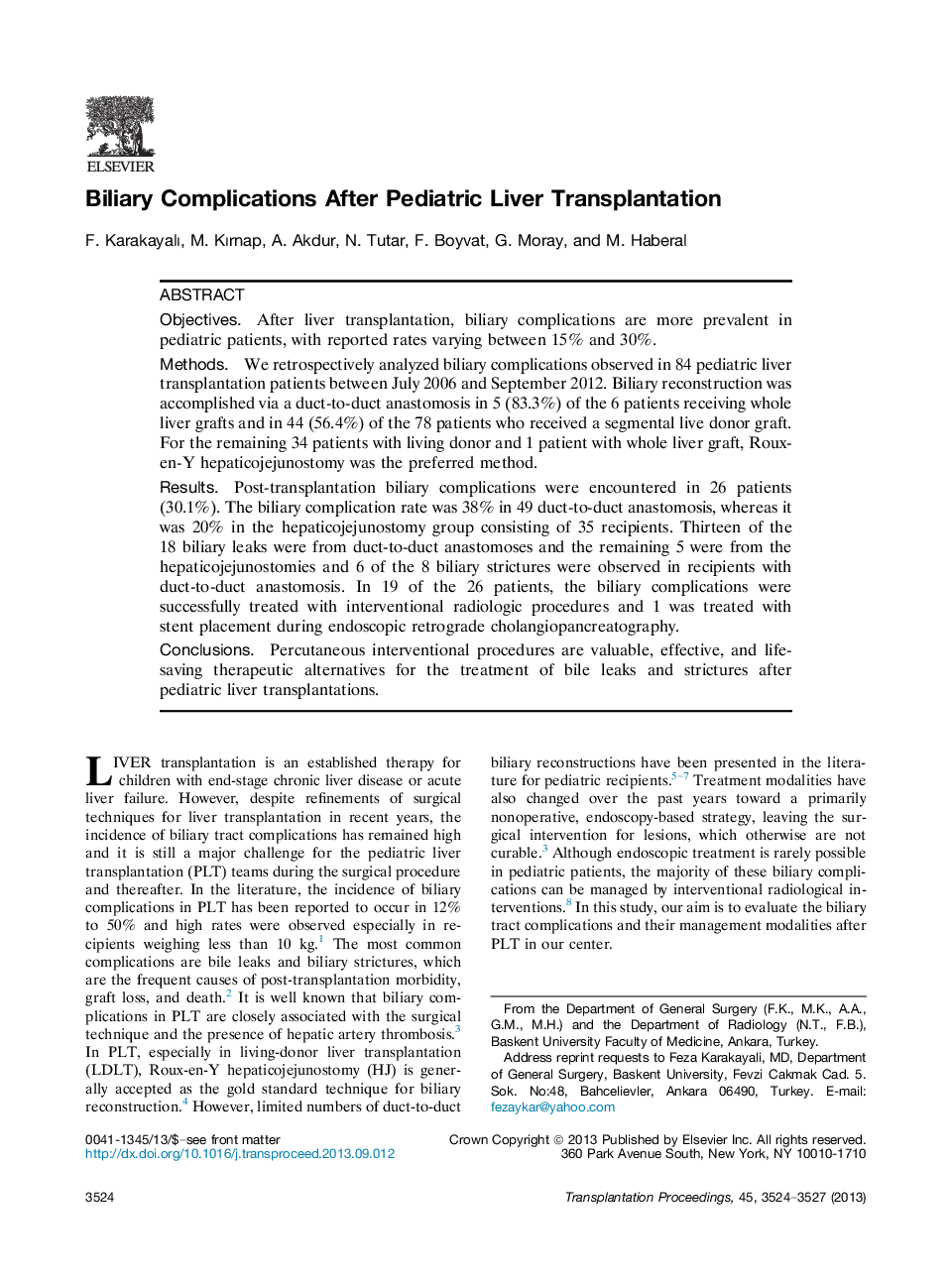| Article ID | Journal | Published Year | Pages | File Type |
|---|---|---|---|---|
| 4256516 | Transplantation Proceedings | 2013 | 4 Pages |
ObjectivesAfter liver transplantation, biliary complications are more prevalent in pediatric patients, with reported rates varying between 15% and 30%.MethodsWe retrospectively analyzed biliary complications observed in 84 pediatric liver transplantation patients between July 2006 and September 2012. Biliary reconstruction was accomplished via a duct-to-duct anastomosis in 5 (83.3%) of the 6 patients receiving whole liver grafts and in 44 (56.4%) of the 78 patients who received a segmental live donor graft. For the remaining 34 patients with living donor and 1 patient with whole liver graft, Roux-en-Y hepaticojejunostomy was the preferred method.ResultsPost-transplantation biliary complications were encountered in 26 patients (30.1%). The biliary complication rate was 38% in 49 duct-to-duct anastomosis, whereas it was 20% in the hepaticojejunostomy group consisting of 35 recipients. Thirteen of the 18 biliary leaks were from duct-to-duct anastomoses and the remaining 5 were from the hepaticojejunostomies and 6 of the 8 biliary strictures were observed in recipients with duct-to-duct anastomosis. In 19 of the 26 patients, the biliary complications were successfully treated with interventional radiologic procedures and 1 was treated with stent placement during endoscopic retrograde cholangiopancreatography.ConclusionsPercutaneous interventional procedures are valuable, effective, and life-saving therapeutic alternatives for the treatment of bile leaks and strictures after pediatric liver transplantations.
